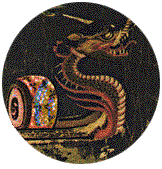The following are three
women I’ve worked with. The first two are friends whom I developed professional
relationships with, and the last is someone I met through my job.
Perle Besserman
For Perle, I am working as
a publicist. She engaged me last November to help her promote Kabuki Boy. I had never been contracted
to do publicity work, and what I did for her I did to save professional face and to
not let her down—the latter being more important, of course. Working together,
we succeeded, I think it is safe to say, and both of us are happy. I will be
helping with two other books of hers coming out this year.
The time seemed right to
promote KB. The timing, the content of the book, her writing style, her poise
and ability to communicate—all these facilitated the success of our publicity
plan. She was interviewed on the local public-radio station, was reviewed in
the weekly independent newspaper (which has since ceased publishing, as I wrote
in previous posts), participated in the 2013 Hawaii Book and Music Festival,
did a video interview available on YouTube, and so forth.
Retired from teaching,
Perle has had a long career as a fiction and nonfiction writer. She is
prolific, and to me her site promotes not only what she has written but also what she is
working on. That is, she is trying not only to sell books but also to find
publishers for new work. (How she managed to get three books published in the
same year is a feat that only she can explain.)
A member of the Authors
Guild, she used one of its templates to build her site. I help her
maintain it, adding pictures, writing captions, and inserting links. If
you go to the site, you'll see a great picture of her with the governor, who
attended the book launch she and her husband organized in late April. I’ve also
posted a few pictures (taken by Tommaso Durante) of the book launch she just
had in Australia and one (taken by Jennie Peterson) of her appearance at the
festival.
Adele Ne Jame
As you can see from
looking at Adele's site, she has a story to tell—a story of her family and country
(Lebanon) and how their history is entwined with her writing. A professor at a
local university, she wants her site to also promote her teaching skills and
experience and to provide evidence of the quality of her work.
During the planning stage,
she told me that she wanted her site to be simple and not incorporate things like
slideshows or videos. We planned to make it twenty pages long, but when I
received her text and images, it became clear that twenty was not enough.
Eventually, the site took up about fifty pages.
I built the site in
QuarkXPress, using both the program’s web-design tools and its print-design features. Each page was saved as an
image and exported as an HTML file. A bit of work then had to be done in
Dreamweaver to make the files ready for uploading to Godaddy’s server.
Adele wrote all the text for the site. That amount of detail and degree of intensity—when combined with the structure of the site, the number of pages, and the typeset look of each page—creates the impression of something more like a book and less like a typical website.
I update the site a few
times a year. Most recently, I worked on the Exhibitions/Press/Reviews page,
adding links to a YouTube video and recent reviews and making minor changes to
a few other pages.
Fiona Sze-Lorrain
Fiona's site promotes her
music career as well as her writing one. (She is a fantastic musician, as her video shows.) Her site was designed for her by a small company,
Tool Maven, and has a distinctive look reflective of her aesthetics and personal
tastes.
Fiona not only writes but
also gives readings, translates the work of Chinese authors, and edits for
Cerise Press and Vif Éditions. This fall, she will be visiting Hawai‘i in connection with the translation and editorial work she’s done for Manoa Journal.



